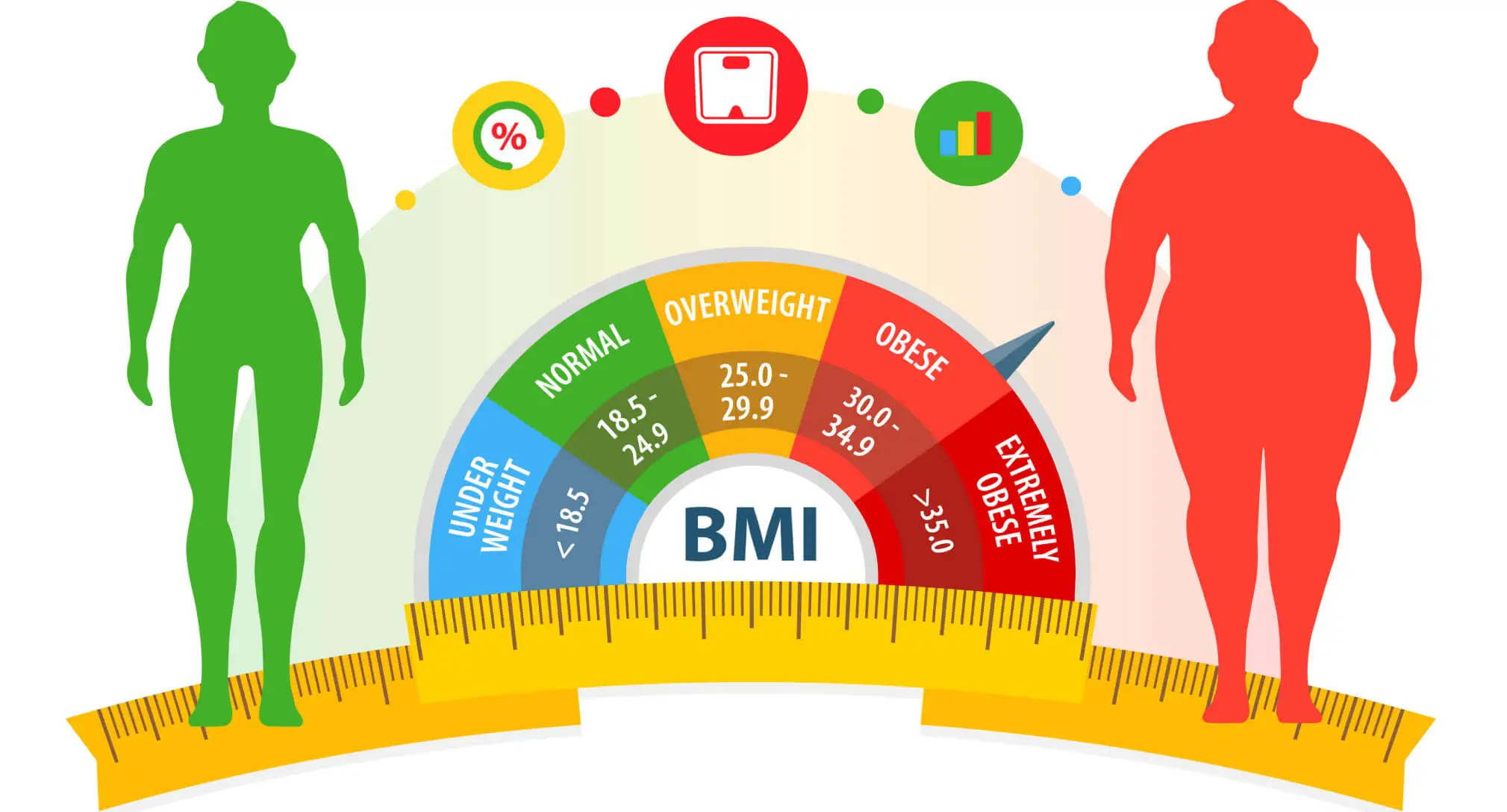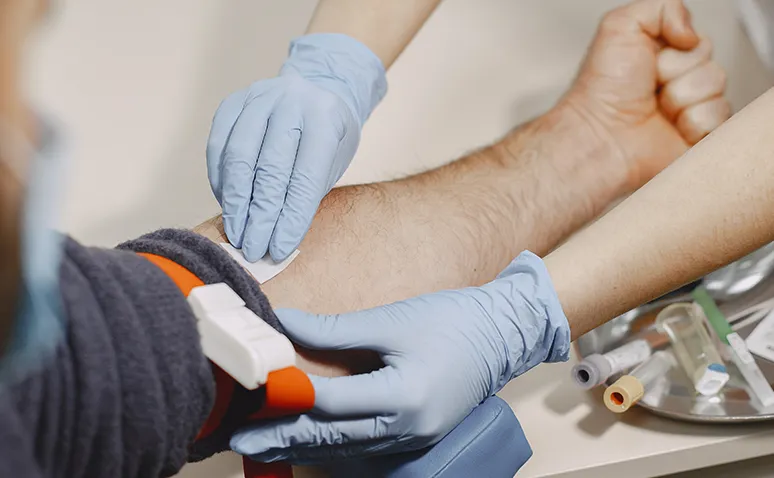
Worldwide, one in four adults and one in five children aged 10-11 is obese.
How do I know if I’m obese?
The only criterion for being obese is to know your body mass index (BMI).
You can find your body mass index if you simply divide your weight by the square of your height.
For example, if you are 1.75 cm tall and 70 kg;
70/ (1.75×1.75) = 22.9 so your body mass index (BMI) is 22.9.
You are underweight if your BMI is below 18.5
If your BMI is between 18.5 and 24, you are at a healthy weight.
You can be considered overweight if your BMI is between 25-29.9
If your BMI is between 30-39.9, you are in the obese limits.
Severely obese is unacceptable if a BMI is 40 or above.
Another method is the measurement of waist thickness relative to height. It is the second important criterion, especially in people with a BMI less than 35.
For this, measurement is made with a tape measure just above the navel. This measurement is divided by the length.
If this rate is 0.5 or above, obesity risk and health problems can be mentioned.
Is the BMI measurement the definitive criterion for deciding on this issue?
Although BMI measurement is the fastest and simplest finding, this criterion is not valid for athletes who have very high weight, such as very muscular people, but whose weight is not due to fat.
What are the health risks of being obese?
The main ones are:
Type 2 Diabetes (Type 1 Diabetes is the absolute deficiency of the insulin hormone with some congenital or subsequent factors or function insufficiency) is the inability of the existing normal insulin to enter the cells and provide the use of sugar, in other words, it is the cellular resistance to insulin; The most important reason for this resistance is the deterioration of the function and structure of the transport mechanism that takes insulin in the cell membrane of the high blood sugar and the fat it transforms into.
Ultimately, if not treated;
Conversion to Type 2 Diabetes,
coronary heart diseases,
Breast and digestive system cancer,
Stroke,
Infertility and acne (related to Polycystic Ovary Syndrome / PCOS disease),
kidney diseases,
Immune system problems are expected health problems.
What is Type 2 Diabetes?
It is a problem that causes the sugar (glucose) in the blood to remain high and cannot be used.
It is a health problem that progresses with thirst, fatigue, eye, nerve and heart problems.
It is a problem that prevents the insulin hormone from doing its job. The function of the insulin hormone, which should be used as an energy source in the blood, is disrupted. This causes insulin not to be able to take sugar into the cell and the sugar to rise in the blood before it can be used. In other words, the doors that need to be opened to insulin in the cell membrane are broken (insulin resistance). Insulin, which cannot enter the cell, cannot take the glucose in the blood with it. The high sugar in the blood cannot be excreted by the kidneys, the permeability of the sensitive membranes in some organs is impaired, this manifests itself with cataracts and ear problems. High sugar in the blood causes the immune system, which works to provide wound healing, to fail to function. The density of the blood increases and the blood flow becomes more difficult, which raises the issue of hypertension and many accompanying heart problems.
What is Homa Insulin?
Homa insulin (HOMA IR-Homeostatic Insulin Resistance) is the expression of insulin resistance test.
In fact, this test is a test that shows insulin resistance easily in a short time by working with side tests (calculating the blood glucose test with mathematical indexes supported by insulin level and triglyceride). Although it is very practical, it is only useful in terms of preliminary knowledge and guiding the treatment. Apart from this, the Oral Glucose Tolerance Test can be performed together with insulin levels and examined by Endocrinologists with more detailed tests.
If the Homa Insulin Index is greater than 4.65
Homa Insulin index greater than 3.6 and BMI greater than 27.5
Homa Insulin Index greater than 2.5 and BMI greater than 28
If blood fat levels are high, insulin resistance and obesity are mentioned.
These findings are even more striking if there is a genetic history of Diabetes in the family.
How is Type 2 Diabetes treated?
The main purpose here is to lower blood sugar so that resistance to insulin does not reach further dimensions. The first measure to be taken is to regulate the diet.
For this;
A diet with a wide range of options, including starchy foods such as fruit, vegetables and pasta, and away from one-sided nutrition should be started. Neither should be in excessive amounts, but give great importance to time and variety.
Salt, sugar, and fat should be kept to a minimum.
Every day, breakfast, lunch and dinner should be meals, meal times should not be skipped. Such diets do not weaken the person, since the metabolism stops at intervals, although the diet taken after long intervals reduces calories, in fact, more fat is stored and increases obesity. Since carbohydrates are not used at that time, they turn into fat and increase insulin resistance.
If his diet is to be changed, it should not be abruptly, but with less radical changes every week. By the time we reach these conditions, portion control has already disappeared and portions have grown. Start with reducing portion sizes and increasing variety.
As for treatment with medication;
Although this issue should be based on the decision of the treating doctor and the results of the findings, two types of drug treatment are considered for Type 2 Diabetes. The appropriate dose decision and treatment method of these drugs is very important. Although the dose may change over time, lifelong treatment may be required. Metformin therapy is currently used. The purpose of this drug is to lower blood sugar by changing the use mechanism of insulin. If there is a problem in taking metformin by the doctor, there are different preparations.
Another form of treatment is to use insulin for a short time. This issue is completely dependent on the doctor’s decision and application advice.
Childhood Obesity
Obesity usually begins in childhood. Today, one out of every three children in the United States is obese. Since 1963, this population has been growing threefold. Type 2 Diabetes and other disease symptoms, which were previously seen in adults, have now moved to younger ages with the return of social life to digital life. In these children, high cholesterol and blood pressure, asthma, sleep disorders, non-alcoholic fatty liver, social and emotional problems, behavioral and learning disorders, depression are seen and affect their later life, and individuals with physical and mental health disorders are raised.
It is the duty of the families to be aware that this is a family problem, to control their life and eating habits for the whole family, to make physical activity a family entertainment and lifestyle, to change their sedentary life styles, to have regular doctor and laboratory check-ups for the whole family. applications are required.











